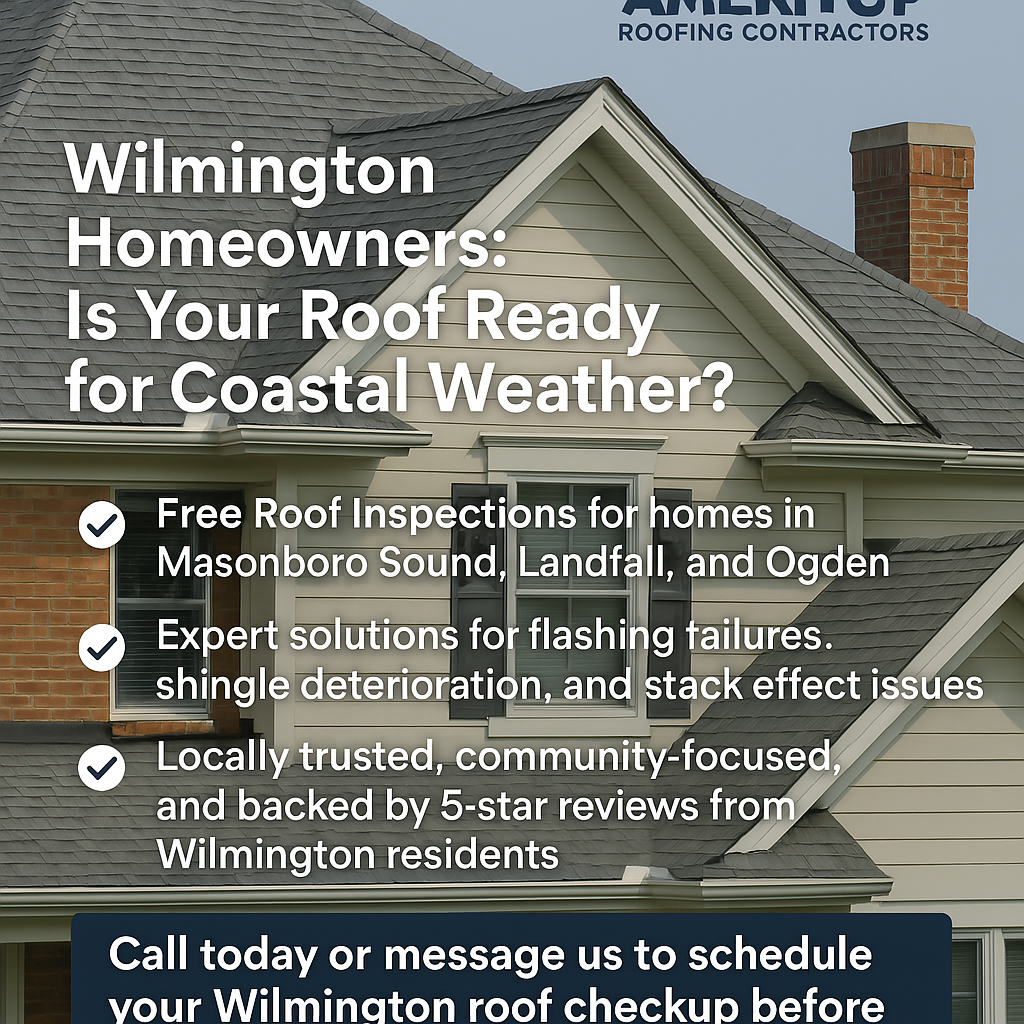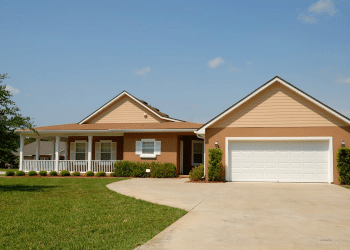Table of Contents
Living near the coast has its perks — ocean views, salty breezes, and vibrant communities. But it also means facing down tropical storms, hurricanes, and relentless humidity. And when it comes to protecting your home, your roof is ground zero.
At AmeriTop Roofing Contractors, we’ve seen firsthand how poor roofing choices can turn a storm into a financial disaster. This guide breaks down what coastal homeowners need to know to storm-proof their roofs — and protect their investment.
Why Coastal Roofs Fail
Most roofing failures during storms aren’t due to the storm’s strength, they’re due to weak installation and poor material choices. Common culprits include:
– Improper nailing patterns that allow shingles to lift
– No starter strip at the eaves, leaving edges vulnerable
– Low-grade underlayment that tears under wind pressure
– Unsealed flashing around chimneys and vents
– Overlooked ridge caps that become entry points for water
According to FEMA, wind-driven rain can infiltrate even small gaps, leading to thousands in interior damage.
Materials That Make a Difference
If you live in a coastal zone, your roof needs to be more than pretty — it needs to be engineered for survival. Here’s what we recommend:
|
Architectural Shingles |
130+ mph wind resistance |
|---|---|
|
Synthetic Underlayment |
Tears resistance and moisture blocking |
|
Metal Roofing |
Long lifespan, High wind rated |
|
Ice and water shield |
Seals vulnerable roofing sections |
Installation Matters More Than Materials
Even the best materials fail under poor installation. Coastal roofing requires:
– Six-nail patterns (not four) for high wind zones
– Proper flashing with sealant and counter-flashing
– Starter strips and drip edge at all eaves
– Ridge vents that balance airflow without compromising seal
A roof is a system — not just shingles. Every component must work together to resist uplift, block moisture, and breathe properly.
Real-World Example: Wilmington, NC
After Hurricane Florence, we inspected dozens of homes in Wilmington. The ones with properly installed architectural shingles and sealed flashing had minimal damage. Others with builder-grade materials and rushed installs suffered:
– Shingle blow-offs
– Attic flooding
– Mold growth
– Insurance claims denied due to poor workmanship
AmeriTop Roofing Contractors
226 N Front street Suite 120
Wilmington, NC 28401
📞 (336) 505-7988
References
– FEMA Coastal Construction Guide
– National Roofing Contractors Association
Final Thoughts
Storm-proofing your roof isn’t just about avoiding leaks, it’s about protecting your home’s value, your family’s safety, and your peace of mind. Whether you’re building new or upgrading an older roof, make sure your contractor understands coastal dynamics and installs with precision.
If you’re in North Carolina and want a roof that’s built to last, give us a call. We don’t just install roofs, we build resilience.
AmeriTop Roofing Contractors
Rich is the owner of AmeriTop Roofing Contractors in Jacksonville, NC. With over a decade of experience in coastal roofing systems, he specializes in storm-proof installations and educating homeowners on long-term protection strategies.







